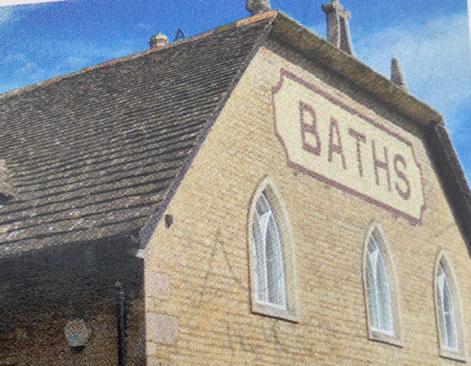ROVING ROW’S REVIEW Tour of Stamford Some sad news to start with. I have to report that our Thomas family matriarch and my stalwart fellow “Rover”, Kathleen, passed away in January. She is very much missed, but I was able to call on other family members to join me for a short break in Stamford, with a view to spending precious time together and, of course, to have the opportunity to visit some of our favourite pubs in the town. We arrived at our digs in Austin Street on a gloomy afternoon, made more so when I noticed the neighbouring street is named Melancholy Walk – I half expected to see Memory Lane too, as this family gathering was bound to be full of reminiscences. We soon cheered up when we got into our cosy terraced “house of historical importance” in Austin Street, close to Austin Friars, a medieval monastery. We settled in and enjoyed a pizza and pasta supper, washed down with a mouth-watering selection of ales, including Conwy Brewery and Cheddar Ales, prosecco and, of course, excellent company. Next morning, we set off to meet our Stamford Tour Guide at the Town Hall, who gave us a fascinating insight into the history of the town, with particular attention to the town’s pubs, both past and present. The tour began outside medieval St Mary’s Church with its C14 broach spire, beyond which we could see the Statue of Justice, the crowning glory of the Stamford Hotel, originally the Black Bull inn, redeveloped by Sir Noel of Exton. Sadly, the Stamford Hotel was described as being “too grand for its restricted site” and the business failed. All very interesting and, considering our family had lived in Barnack for more than 30 years, there was still a lot we didn’t know about Stamford, or Wittering for that matter, as we discovered that the village had a quarry of Wittering Pindle stone, used extensively in the building of Stamford.
16
BEER AROUND ‘ERE
OCTOBER/NOVEMBER 2021
St Mary’s Street has enough material to merit its own separate tour, including more former pubs, the George and Angel, an inn built in the Middle Ages, and the Eagle and Child, now The Vaults. This pub’s name was changed because of the Nazi connotations. St George’s Square next to the Assembly Rooms was full of interesting facts and here we learned where the phrase “losing face” comes from. In Georgian times, men and women used goose fat to lighten their skin and hide blemishes. The dances held at the Assembly Rooms were usually packed with people and as the evening went on, the fat would melt and drip off their faces, hence they “lost face”. After the tour, we popped in to The Crown on spec, and dropped lucky with a table in the marquee, enjoyed a delicious light lunch and pints of London Pride and Landlord. We continued our stroll and later called in to the Tobie Norris, where we sat in what was formerly a shop window in this quirky medieval building. We had a shock when the bill came for four pints – over £50! Fortunately, the waiter had given us the tab for his previous customer by mistake. Back to Austin Street for a quick freshen up and then it was early doors at the Jolly Brewer. A real treat! Jill made us very welcome and spent time explaining about the available ales. We felt for her, such hard work with Covid restrictions, what with cleaning, track and trace, serving, clearing tables, but all the time somehow managing to keep up cheery banter with her customers. Dean appeared shortly afterwards to relieve her for her night off. We tottered off home for a nightcap or two, to dream of the monks passing by along the cobbled street, with their donkeys laden with ale from the Austin Friars brewery. Row *Editor’s note: Clearly this visit was before Jill and Dean vacated the Jolly Brewer. Visit our website for up-to-date news: www.peterborough.camra.org.uk







